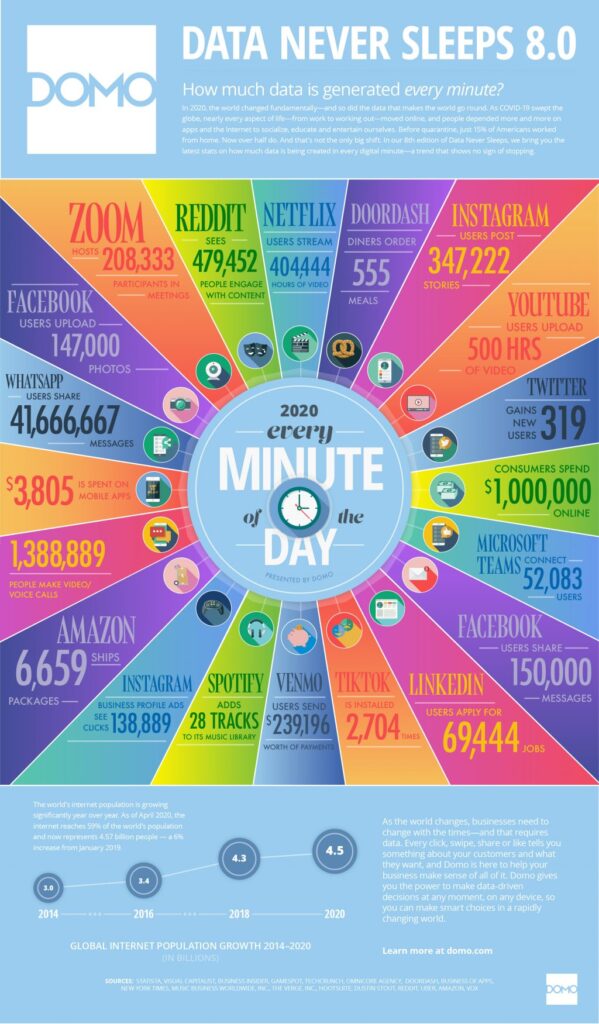As our economy… and our collective patience with this pandemic… both shrink, there’s one thing that’s expanding at an enormous rate.
“In an increasingly digital world intensified by the outbreak of COVID-19, 2020 has introduced a new era where technology and data have taken more significant roles in our daily lives. As we learn to adapt to this new era, data never sleeps,” notes this post from DOMO illustrating just how much data is generated every single minute, and how much of our lives is run online now.
In one internet minute:
- 6,659 Amazon orders ship
- Spotify adds 28 tracks
- 404,444 users stream something on Netflix
- Zoom hosts 208,333 meeting participants
- Facebook users share 150,000 messages (Okay, that one surprised me. I expected it to be more. Maybe people really are getting a little tired of that whole thing)

Some of this digital immersion is a good thing — DoorDash deliveries are keeping people safe, and Amazon is a safer substitute for running errands around town. But we are still human beings … and the constant digital experience is not how our brains like to function.
Has this really grown exponentially … or are we just more cognizant of how much time we spend staring into our screens? I looked back to this post from 2014 to compare a couple of key stats… and yes, we are up … way up.
For example, in 2014, 1 million searches were performed on Google. In 2020 that number is up four-fold, to 4.1 million.
This means your brand faces an ever-growing challenge of cutting through the digital clutter. And even more so than six years ago, your customers are not just ignoring but actively blocking your paid ads. Digital minimalism is now being viewed as an act of self-care.
What we aren’t ignoring is print. In this time of transient digital experiences, we long for something permanent. Humans are designed to value what’s real and tangible; research proves that we value physical over digital even when the content is the same.
Consumers are proving this; print book sales in retail outlets took a nice jump as people started stocking up on essentials this spring. Magazine publishers are seeing readers subscribing to favorite magazines. And brands are recognizing that cutting through the digital clutter becomes much easier when print is part of the campaign.
The pandemic is changing a lot of things, folks. Yet our fundamental human preferences for real over digital, for permanent over fleeting, for print over digital when it’s time to relax, isn’t changing.
We might be spending more time doing the “tasks” of life online, but we still need that disconnect. This is where brands have an opportunity to partner with their readers in a way that resonates for far longer than an internet minute.
